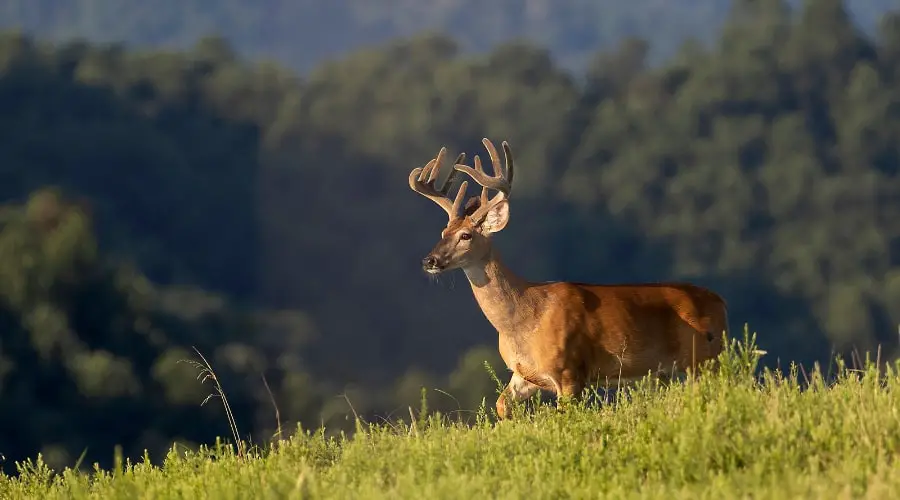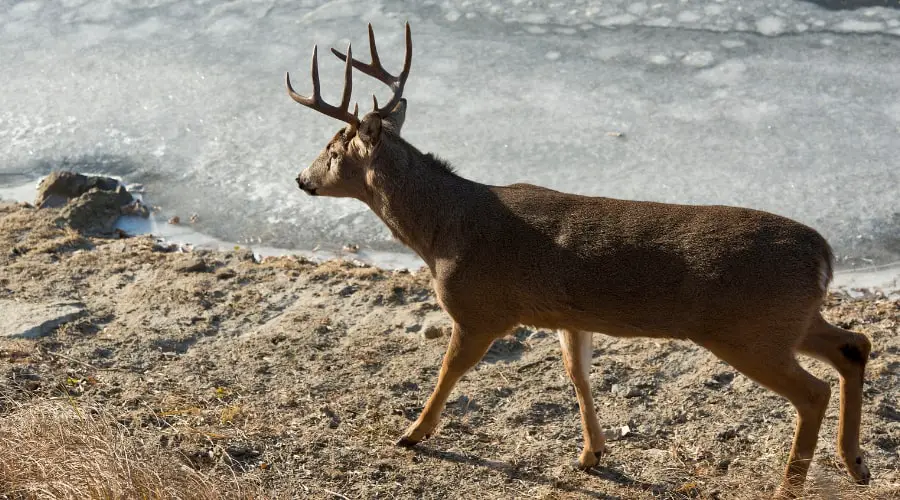A 160-class whitetail deer is a deer whose antlers have been scored at 160 or higher on the Boone and Crockett scoring system. This scoring system considers not only the size of the deer’s antlers but also factors like symmetry and the number of points.
The higher the score, the more impressive and sought-after the deer is among hunters. Hunters need to understand this scoring system as it helps to classify. And appreciate the quality and size of the deer’s antlers in a standardized way.
However, remember that hunting regulations and scoring systems may vary by region. So, it’s always best to check with local hunting authorities or experienced hunters for the most up-to-date information.

Characteristics Of A 160-Class Whitetail Deer
A “160-class” whitetail deer refers to a mature buck with an impressive set of antlers, usually evaluated using the Boone and Crockett scoring system. These deer are typically around 5-6 years old and boast antlers that score around 160 inches or higher based on size and configuration.
In addition to their notable antlers, these bucks have other distinguishing characteristics. They usually weigh between 200-250 pounds and stand about 3-4 feet tall at the shoulder. Their fur is predominantly brown, and they have a distinctive white belly and throat. Another recognizable feature is their short tail.

How To Hunt A 160-Class Whitetail Deer?
If hunting whitetail deer is legal in your area and you have the necessary permits and licenses, here are some general tips for tracking them:
Research
Understand the local hunting regulations, seasons, and specific rules for hunting whitetail deer in your area. Familiarize yourself with the behavior and habitat of whitetail deer.
Scouting
Spend time scouting the area where you plan to hunt. Look for deer tracks, droppings, bedding areas, and feeding grounds. Identify trails and travel patterns.
Choose the Right Gear
Use appropriate hunting gear, such as a reliable rifle, bow, or crossbow, and choose the right caliber or draw weight for your weapon. Make sure your equipment is well-maintained.
Practice Shooting
Ensure you are proficient with your chosen weapon. Regular practice at the shooting range will improve your accuracy and increase your chances of a successful and ethical shot.
Concealment and Scent Control
Whitetail deer have excellent senses, including keen eyesight and a strong sense of smell. Use camouflage clothing and scent control products to minimize your scent.
Hunt from a Stand or Blind
Consider hunting from a tree stand or ground blind to increase your chances of remaining undetected.
Hunt During the Rut
During the rut (breeding season), bucks are more active and less wary. This can be an excellent time to hunt for a trophy-sized deer.
Be Patient and Quiet
Hunting requires patience and silence. Avoid sudden movements and excessive noise, as deer are easily spooked.
Ethical Shot Placement
Always aim for a clean and ethical shot to ensure a quick and humane kill. Practice shooting at various distances to be confident in your abilities.
Respect Nature
Appreciate the outdoors and respect the wildlife and the environment. Hunting is a responsibility that should be undertaken with the utmost care and respect for the animals and their habitat.
Remember, hunting is a privilege and a responsibility. Always follow the local hunting laws and regulations, and prioritize the safety of yourself and others while enjoying the outdoors.
Locations To Discover 160-Class Whitetail Deer

Top locations to discover 160-class whitetail deer are scattered throughout the United States. Among the finest spots to seek them out are Texas, Kansas, Iowa, Illinois, and Ohio.
These regions boast abundant populations of whitetail deer, renowned for yielding magnificent bucks displaying impressive antlers.
What Equipment And Weaponry Are Suggested For Hunting 160 Class Whitetail Deer?
When hunting 160-class whitetail deer, it’s essential to have the appropriate weapons and gear to ensure an ethical and successful hunt. Here are some recommended options:
Firearm
A suitable firearm for hunting whitetail deer is a high-powered rifle chambered in popular calibers such as
- 270 Winchester,
- 30-06 Springfield,
- 308 Winchester, or similar.
These calibers provide enough stopping power and accuracy to take down a deer of this size.
Ammunition
Choose premium quality ammunition for hunting, such as expanding or bonded bullets. It’s crucial to use appropriate shots for the caliber and rifle you’re using.
Optics
Good quality optics, such as scopes, are essential for accurate shooting. Look for areas with a clear view, appropriate magnification range, and durable construction.
Hunting Knife
A sharp and reliable hunting knife is essential for field dressing and processing the deer after the hunt.
Hunting Clothing
Wear appropriate camouflage or hunting clothing that matches the environment you’ll be hunting in. Layering is essential to regulate body temperature.
Scent Control
Whitetail deer have a keen sense of smell. Use scent control products like scent-free soap, scent eliminator sprays, and scent-blocking clothing to minimize odor.
Binoculars
Good quality binoculars help you spot deer from a distance and plan your approach carefully.
Backpack
A comfortable and spacious backpack is essential for hunting accessories, water, snacks, and other necessities.
Hunting Calls
Calls like grunt calls or doe bleats can help attract deer.
Game Calls
A deer drag or game sled can make transporting the harvested deer easier/especially if you are hunting in areas where vehicle access is limited.
Safety Gear
Always wear blaze orange or conspicuous clothing to ensure other hunters can see you. Safety harnesses are essential when hunting from elevated stands.
Map and Compass/GPS
Knowing the area you’re hunting and having a way to navigate is crucial, especially if you’re hunting in unfamiliar terrain.
First Aid Kit
Carry a basic first aid kit to handle any minor injuries that might occur during the hunt.
Remember to check and comply with local hunting regulations and obtain any necessary permits before your hunting trip. Additionally, always prioritize safety and ethical hunting practices when pursuing any game.
Conclusion
In short, the 160-class whitetail deer represents a remarkable and sought-after specimen in the world of hunting and wildlife enthusiasts.
With a Boone and Crockett score of 160 inches or above, these majestic creatures exemplify genetic potential and impressive antler size.
Their rarity and exceptional trophy quality make them a cherished pursuit for hunters and a symbol of thriving biodiversity in their habitats.

